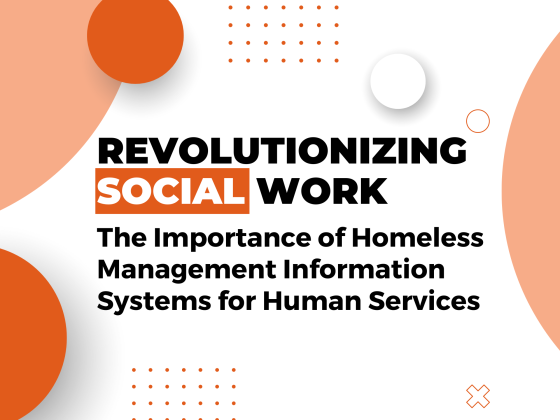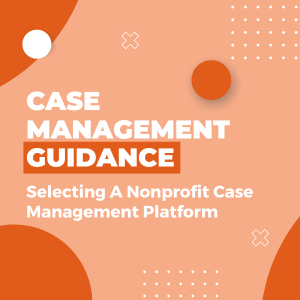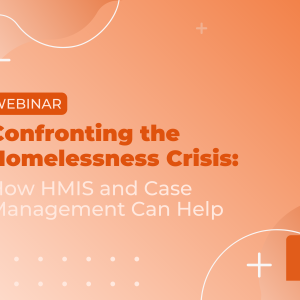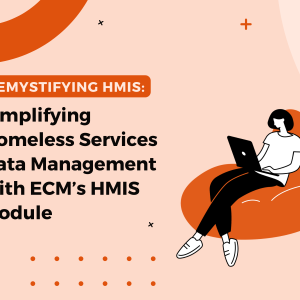Revolutionizing Social Work: The Importance of Homeless Management Information System for Nonprofit Human Services
Homelessness is a complex social issue that affects individuals, families, and communities. Providing effective services and programs to those experiencing it is crucial for addressing the problem. This is where the Homeless Management Information System (HMIS) comes in. HMIS is an important tool that helps nonprofit human services and social work professionals meet the needs of homeless individuals.
This article will provide an overview of what HMIS is, why it’s important for addressing homelessness, and the benefits and challenges of implementing it in nonprofit organizations.
Understanding Homelessness and Its Impact on Communities
Homelessness is a significant social issue that affects millions of people around the world. According to the National Alliance to End Homelessness and HUD’s December 2022 report, there were an estimated 582,462 people experiencing homelessness on any given night in the United States.
The effects of homelessness on individuals are devastating. Homeless people are at a higher risk of physical and mental health problems, including malnutrition, respiratory infections, and mental health disorders. They also face significant barriers to accessing healthcare, education, and employment opportunities. Homeless people are also vulnerable to violence and abuse, making them more susceptible to physical and sexual assault.
The impact of homelessness on communities is equally significant. Homelessness can lead to increased crime rates, including drug abuse and property crime. It also puts a strain on the healthcare system, as homeless individuals often rely on emergency room visits for medical care. Homelessness also affects the local economy, as businesses may be hesitant to invest in areas with high levels of homelessness.
Addressing this issue requires a multi-faceted approach that includes providing housing, healthcare, and social services to individuals and families in need. To effectively deliver these services, homeless service providers need accurate and up-to-date information about the people they are serving. That’s where Homeless Management Information System or HMIS software plays an important role.
What Is HMIS?
HMIS is a database system designed to collect and manage data on individuals and families experiencing homelessness. These centralized databases help nonprofit organizations track information on individuals and families experiencing homelessness, including their demographics, service history, and outcomes.
Using a Homeless Management Information System is a requirement for many organizations addressing homelessness who receive funding from HUD, HHS, and/or the VA. Nonprofits require this kind of information technology system in order to provide services to individuals and families experiencing homelessness.
The Key Components of Homeless Information Management System
The components of a strong HMIS include the following:
Client Screening and Intake
This component involves collecting information about clients entering the homeless service system. This includes their demographic information, reasons for homelessness, and service needs.
The screening and intake process may also involve conducting a vulnerability assessment to identify individuals who may be at higher risk of harm or health complications due to their homeless status.
Client Assessment
Client assessment involves a more comprehensive evaluation of the individual’s needs, strengths, and barriers to obtaining stable housing. This process may involve conducting a thorough assessment of the individual’s:
- physical health
- mental health
- substance abuse history
- employment and education history
- social support networks
- any other relevant factors that may impact their ability to obtain and maintain housing
The purpose of the client assessment is to develop an individualized service plan that addresses the unique needs and goals of the individual. The assessment also helps determine the appropriate level and type of homeless services needed to achieve stable housing.
Service Planning
Based on the client assessment, an individualized service plan for each client is developed based on their unique needs, strengths, and goals. Service planning typically includes working collaboratively with the client to identify their housing and service needs and setting goals and objectives.
Service planning should be reviewed and updated periodically based on the client’s progress and changing needs. The service plan serves as a roadmap to guide the delivery of services and interventions to support the client’s efforts to obtain and maintain housing.
Service Tracking
This involves tracking the types of services clients receive, the frequency of services, and the outcomes of services. This helps providers understand which services are most effective in helping clients move out of homelessness.
Data Quality
Data quality control ensures the accuracy and consistency of the data entered into the system. This is important for generating reliable reports and analysis.
Reporting and Analysis
This part of HMIS involves generating reports and analyzing data to assess the effectiveness of services and identify areas for improvement. This helps providers to make informed decisions about service delivery and resource allocation.
Privacy and Security
This component ensures that client information is protected and kept confidential, in compliance with applicable laws and regulations.
HMIS Requirements from HUD
The U.S. Department of Housing and Urban Development (HUD) plays a central role in the implementation and oversight of HMIS across the United States. HMIS is a federal requirement for all Continuums of Care (CoCs) that receive funding through HUD’s Continuum of Care Program.
HUD provides guidance and standards for the design, implementation, and operation of HMIS systems. They require all CoCs to use an HMIS to collect data on homelessness and homeless services in their communities. This data is then used by HUD and other agencies to inform policy, funding decisions, and to evaluate the effectiveness of homelessness programs.
HUD also provides funding for the development and maintenance of HMIS systems, as well as technical assistance to help CoCs implement and operate their HMIS systems effectively. In addition, HUD requires CoCs to use HMIS to report data on the Annual Homeless Assessment Report (AHAR), which is used to estimate the number and characteristics of people experiencing homelessness across the country.
Overall, the relationship between HUD and HMIS is essential in the effort to end homelessness in the United States. By requiring HMIS and providing guidance and funding, HUD helps ensure that accurate and comprehensive data is collected and used to inform decision-making and evaluate the effectiveness of homelessness programs.
Benefits of Using HMIS for Nonprofit Human Services and Social Work Professionals
Implementing a Homeless Management Information System can provide numerous benefits for nonprofit human services and social work professionals, including:
Improved data collection and analysis
HMIS provides a centralized system for collecting and managing data on individuals and families experiencing homelessness. This data-driven approach allows organizations to track service utilization and outcomes more effectively, which can inform program planning and decision-making.
Enhanced coordination and collaboration among service providers
HMIS can help facilitate coordination and cooperation among service providers by providing a common platform for sharing data and information.
By sharing client information across agencies, providers can avoid duplication of services and ensure that clients receive the appropriate level of care. This collaboration can also lead to more efficient use of resources and ultimately improve the quality of services provided to clients.
A better understanding of service utilization and outcomes
HMIS can help nonprofits analyze how clients are using their services, including the types and frequency of services accessed. By analyzing this data, nonprofits can identify which services are most effective in helping clients achieve their goals and which services may need to be modified or expanded.
Improved program planning and funding decisions
By providing accurate data on homelessness in the community and the types of services needed, organizations can better plan their programs and allocate resources effectively. This data can also be used to secure funding and demonstrate the effectiveness of programs to funders and stakeholders.
Monitoring client progress
HMIS can help nonprofits track client progress over time. By tracking outcomes such as housing stability, employment, and healthcare access, nonprofits can evaluate the effectiveness of their programs and make adjustments as needed.
Exponent Case Management’s HMIS module is a great example of software that helps organizations collect, store, and analyze data on individuals and families experiencing homelessness. This module can help organizations streamline their data management processes and make more informed decisions about service provision.
Challenges In Implementing HMIS
While there are many benefits to implementing HMIS, there are also some challenges that organizations may face. These include:
Integration with existing systems and processes
Implementing HMIS may require significant changes to existing systems and processes, which can be challenging for organizations. Nonprofits should identify any potential conflicts or issues and develop a plan to address them.
This is one of the things Exponent Case Management’s HMIS module addresses. It is designed to integrate with other systems, such as billing systems and other data sources. This can help service providers streamline their workflows and improve data sharing across organizations.
Ensuring data quality and security
Organizations need to ensure that the data they collect and manage through HMIS is of high quality and is secure.
Addressing privacy concerns and regulations
Organizations need to be aware of and comply with regulations around data privacy and security. This includes ensuring that the data collected is secure and that individual privacy is protected.
Funding for implementation and ongoing support
Implementing and maintaining an HMIS system can be costly, which can be a challenge for nonprofit organizations with limited resources.
Best Practices for Implementing HMIS in Nonprofit Human Services and Social Work Organizations
Implementing a Homeless Management Information System can be a complex process that requires careful planning and preparation. To ensure a successful implementation, follow these best practices:
1. Establish clear goals and objectives
Before implementing an HMIS system, it is important to determine your goals and objectives. This includes identifying the types of data that will be collected, how the data will be used, and who will have access to it. It is important to involve all stakeholders in this process to ensure that everyone’s needs are being met.
2. Planning and preparation
Before embarking on any HMIS implementation project, it is essential to conduct a comprehensive needs assessment. This assessment should identify the organization’s existing data systems, gaps in data collection and analysis, and the potential benefits of implementing an HMIS. It is also important to assess the organization’s technology infrastructure and readiness to implement an HMIS.
Once the needs assessment is complete, it is crucial to develop a clear implementation plan that outlines the necessary steps. This plan should identify key stakeholders, roles and responsibilities, timelines, and the resources required to support the project.
3. Involvement of stakeholders and partners
Stakeholders should be involved in all stages of the project, from planning and design to implementation and evaluation. This involvement ensures that the HMIS meets the needs of the organization and its clients.
It is also essential to identify and engage partners who can provide their support and expertise. These may include technology vendors, consultants, or other organizations that have experience implementing HMIS in the social work sector.
4. Foster collaboration among service providers
HMIS systems can facilitate collaboration among service providers by allowing them to share information about clients and their needs. This can help ensure that clients receive coordinated and comprehensive services. Organizations should establish protocols for sharing information and ensure that all stakeholders are aware of these protocols.
5. Training and support for staff and users
It is essential to provide staff with the necessary training to use the system effectively. Training should include instructions on data collection, data entry, and report generation. The training should be ongoing to ensure that staff members are comfortable and confident in using the HMIS. This can include providing training materials, hosting training sessions, and offering technical support.
In addition to staff training, it is also important to provide support for users of the HMIS. This support can include help desk services or online tutorials to help users navigate the system.
6. Continuous evaluation and improvement
HMIS systems can provide valuable insights into the needs of clients and the effectiveness of services. Organizations should use this data to inform program planning and funding decisions, as well as to identify areas for improvement.
Organizations should continuously evaluate the HMIS system to ensure that it is meeting the needs of the organization and the individuals and families it serves. This includes regularly reviewing data and outcomes, identifying areas for improvement, and making necessary changes to the system. Regular data analysis and reporting can help ensure that organizations are meeting their goals and objectives.
7. Maintain data quality and security
Data quality and security are critical when it comes to HMIS systems. Organizations should establish protocols for data entry and ensure that data is regularly reviewed for accuracy. They should also implement security measures to protect sensitive information and ensure that data is only accessed by authorized personnel.
Use Homeless Management Information System To Make A Difference
HMIS enables service providers to collect and analyze data on individuals and families experiencing homelessness. This leads to more effective ways to address this issue in communities. By using HMIS, nonprofit organizations and service providers can make more informed decisions about service provision, which can lead to better outcomes for individuals and families experiencing homelessness.
At Exponent Case Management, we offer an HMIS module that provides everything you need for complete and accurate data. Our module can be customized to meet the specific needs of your individual organizations and can scale up or down as needed. With comprehensive data management and improved client services, we’re confident we can help you with better program planning and funding decisions.
If you’re interested in learning more about our HMIS module or how we can support your organization in addressing homelessness, watch our informative webinar video or reach out to us today. Together, we can make a difference in the lives of individuals and families experiencing homelessness.




